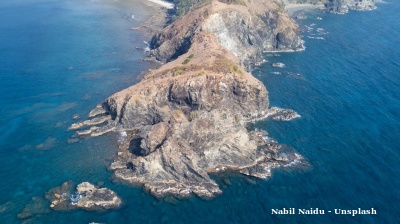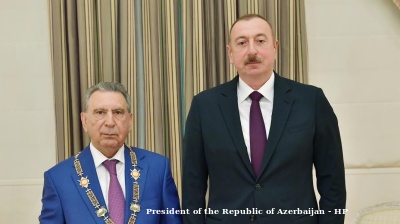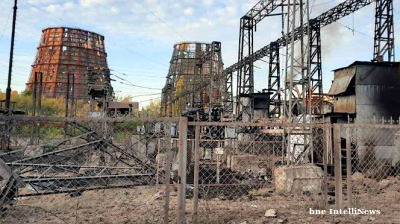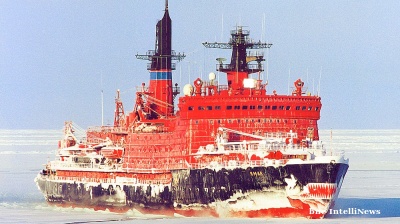European producers of aluminium and other non-ferrous metals have cut production in response to soaring energy prices, and there are signs this could turn out to be a long-term problem. Stiff competition for aluminium imports, likely to intensify if additional sanctions are imposed on Russia, is pushing prices up, but many of the exporting producers have higher carbon footprints than those within the EU.
Since September 2021, the European Union has temporarily lost almost one-third of its primary aluminium capacity, and there have been similar shutdowns and capacity reductions by producers of zinc and other metals that require large amounts of electricity; according to Eurometaux, the European Association of Metals, electricity costs make up to 40% of the production costs for primary non-ferrous metals.
They include a number of producers in eastern EU members such as Romania’s Alro, Slovakia’s Slovalco and Talum in Slovenia, as well as KAP in EU accession candidate Montenegro.
In Romania, Alro announced to investors in a note filed to the Bucharest Stock Exchange (BVB) at the end of December that its board of directors has decided that the production of primary aluminium will be reduced in 2022 from five to two electrolysis halls, “in the context of the exceptional situation on the energy and gas markets”.
In 2022, measures will be taken to reduce costs and streamline activity, and the quantities of primary metal that will no longer be produced will be partially offset by recycled metal or primary metal purchased from third parties, the company said. The management of the company is not currently considering layoffs.
Slovakia’s Slovalco cut production by 40%, after previously announcing a capacity cut to 80% in 2019, the latter connected to the country’s EU Emissions Trading System (ETS). According to a letter sent by Eurometaux to top EU officials in January, the new cut corresponds to an annual reduction of 35,000 tonnes of aluminium, and the association adds: “If conditions are not improved, the smelter, which is one of the newest and most efficient in Europe, will shut down permanently."
Meanwhile, Talum lowered production from its Slovenian smelter from November 1.
Among the West European companies to take similar steps are Aluminium Dunkerque Industries France, Trimet Aluminium in Germany, Aldel in the Netherlands and Alcoa in Italy.
The hike in power costs has also affected European producers outside the EU. Montenegro’s Uniprom completed the shutdown of the country’s sole aluminium smelter, KAP, December 30, after it failed to reach an agreement on a new electricity price with power company EPCG.
Uniprom decided to close the smelter as rising electricity prices made its production uneconomic. At the end of 2021, KAP was paying just €45 per MWh plus VAT, while on international markets the electricity price was now around €250 per MWh. EPCG asked to put the price up so it wouldn’t experience financial losses, prompting Uniprom to temporarily close the smelter.
Highlighting just how energy-hungry such smelters are, EPCG announced in January that it will have excess electricity worth more than €100mn to export after its biggest client halted operations.
In all, over half of Europe’s aluminium smelters have been affected by the power crises. The EU has temporarily lost 650,000 tonnes of primary aluminium capacity: about 30% of its total, Eurometaux said.
The association also listed a number of shutdowns and reductions in production at zinc producers, as all nine electrolytic zinc smelters in the EU have been “heavily affected” by the power crisis. Among them is the KCM zinc smelter in Bulgaria.
Warning signs
On January 18, Eurometaux sent a letter to top European officials warning of closures and curtailments in Europe’s non-ferrous metals industry because of high electricity prices, and calling for concrete actions to address the “critical situation”.
“The current power crisis has already led to unprecedented curtailments and temporary closures across our sector, which is the most impacted today. We’re deeply concerned that Europe now risks entering a decade of repeating power price spikes, and request that the EU and governments deliver a thorough and concrete package of measures to prevent de-industrialisation in strategic industries,” the letter said.
“After a quadrupling of electricity prices, over half of the EU’s aluminium and zinc smelters are today operating at reduced capacity or have temporarily closed, together with a significant reduction in silicon output.”
It’s unclear when the current spike in energy prices will abate, and there are warning signs this could become a long-term problem.
“Companies are always making progress in improving efficiency, and most have high efficiency already, but the power costs we see today are so high compared to the product sale price that they are unmanageable. There is concern this could become systemic,” Chris Heron, director for communication and public affairs at Eurometaux, told bne IntelliNews.
“Currently producers which are mainly buying their electricity on the spot market and are paying the prices of today are the ones which are impacted, but we’re seeing that future prices are going up too,” he added.
Geopolitics adds to the problem
The unfolding tensions between Russia and Ukraine are making the situation worse.
Donatas Bepirstis, director of UAB Linoksa, a stainless steel and aluminium product trader in Lithuania, told bne IntelliNews that the company has experienced both rising aluminium prices and shortages of aluminium raw material.
Commenting on the reasons, Donatas said: “As Russia remains one of the main aluminium raw material suppliers, for Lithuania included, the tensions we’re seeing are backfiring – Russia, one of the key aluminium mining countries, has maintained aluminium exporting, expecting even higher prices in the market. Subsequently, all the players in the chain play a waiting game and do not hurry to sell their products, to put it mildly. Coupled with the soaring energy prices, this makes things even worse for the end client.”
In a note at the end of January, ING analysts listed the main developments behind the sharp rise in aluminium prices, stemming from the shortages on the European market. They noted that the major West European producers that have closed or scaled back production in response to high energy costs have not come back to the market.
“While some may be hoping power prices could get better after the heating season, tensions around Ukraine have made things worse so that European buyers are even scrambling for coal for fear of Russian gas supplies being cut off,” the note said.
Second, there is the threat of sanctions blocking aluminium from Russia – the world’s second-largest producer after China – from the market. Russia is currently seen as the only country in the region that could contribute to additional supply growth in 2022, after it boosted production at the Taishet smelter.
“No one knows how the Ukrainian situation will unfold, but the market is pricing in some risk premium on a potential escalation of the geopolitical risk which may further rattle the already stretched aluminium market,” ING said.
“Sanctions could also possibly have an impact on output from European aluminium smelters. As we are currently seeing, smelting capacity in Europe is having to shut down due to high power prices. In a scenario, where sanctions impact Russian gas flows, this would only drive European energy prices higher, risking even further capacity restrictions in the region,” ING analysts wrote in a separate note on February 4.
Competition for imports
The shutdowns in Europe have forced EU consumers of aluminium to increase imports, but they face stiff competition from companies in the US and China.
While Europe suffers from high fuel prices, other world regions are also facing issues. There is now more competition between Europe, the US and China – which also experienced a fall in production – for imports of primary aluminium.
“Among other things to consider, is China, which is in transition of becoming an aluminium importer. It used to be a major an aluminium exporter before,” said Donatas.
“Many local aluminium part producers are very weary and wary of the situations, thence the record prices.”
Green transition under threat
Metals such as aluminium, zinc and silicon are important for the green transition underway in Europe and other parts of the world. However, there are fears the continent will have to rely on imports from smelters with higher carbon footprints than those within the EU.
“My understanding is that some demand is now being fulfilled through increased imports. A lot of the smelters that have shut are very CO2 competitive, so the imports coming in will have a higher carbon footprint,” said Heron.
“The EU’s Industrial Strategy recognises that the Green Deal will require metals in higher volumes to supply clean energy value chains such as batteries, electric vehicles, wind turbines, solar panels, and grid infrastructure. Europe must not only retain its existing metals supply base to meet this demand in a sustainable way, but also create positive business conditions for investments into extra refining capacity for energy transition metals,” said the letter from Eurometaux to EU officials.
“Neither will be possible if today’s high electricity prices become systemic, and the reality is that the increasing global metals demand is currently being met by new refining capacity in other parts of the world.”
Contributions from Denitsa Koseva in Sofia and Iulian Ernst in Bucharest.
Features

Andaman gas find signals fresh momentum in India’s deepwater exploration
India’s latest gas discovery in the under-explored Andaman-Nicobar Basin could become a turning point for the country’s domestic upstream production and energy security

The fall of Azerbaijan's Grey Cardinal
Ramiz Mehdiyev served as Azerbaijan's Presidential Administration head for 24 consecutive years, making him arguably the most powerful unelected official in post-Soviet Azerbaijan until his dramatic fall from grace.

Ambition, access and acceleration – Uzbekistan’s Startup Garage opens free academy for entrepreneurship
Aim is to train 50,000 young founders by 2030.

Ukraine’s growing energy crisis promises a cold and dark winter
Since the summer, Kyiv has changed tactics. Given the almost complete failure of Western oil sanctions to curb Russian oil exports, it has been targeting Russian oil refineries. The Kremlin has struck back, targeting Ukraine's power system.




